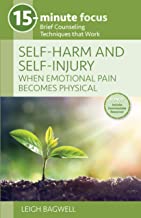Non-Suicidal Self-Injury-Self-Harm
Nonsuicidal self-injury, often simply called self-injury, is the act of deliberately harming your own body, such as cutting or burning yourself. It’s typically not meant as a suicide attempt. Rather, this type of self-injury is a harmful way to cope with emotional pain, intense anger and frustration.
While self-injury may bring a momentary sense of calm and a release of tension, it’s usually followed by guilt and shame and the return of painful emotions. Although life-threatening injuries are usually not intended, with self-injury comes the possibility of more-serious and even fatal self-aggressive actions.
Getting appropriate treatment can help you learn healthier ways to cope.
Cluster Number:
Wiki Number: WP137
Diagnosis: Self-Harm (Cutting-Self-Mutilation)
US Patients:
World Patients: In 2010, 880,000 deaths world-wide from self-harm
Sex Ratio: B;G5-ages 12-15
Age Onset: 14-24 years old average
Brain Area: Beta endorphins in the brain may reward self-harm after the act
Symptoms: intentional self-injury to bodily tissue, without intent for suicide;
Progression: Chronic pot users may self-harm
Causes: childhood abuse leading to temporary relief from intense feelings, from trauma, emotional or sexual; 30% of autistic children
Medications:
Therapies: avoidance strategies; Dialectical Behavior Therapy is often used; helping find alternative behaviors under stress
Youtube Video: Understanding Non-Suicidal Self-Injury
Amazon or Library Book: 15-Minute Focus: Self-Harm and Self-Injury
Click the book to link or buy from Amazon.

